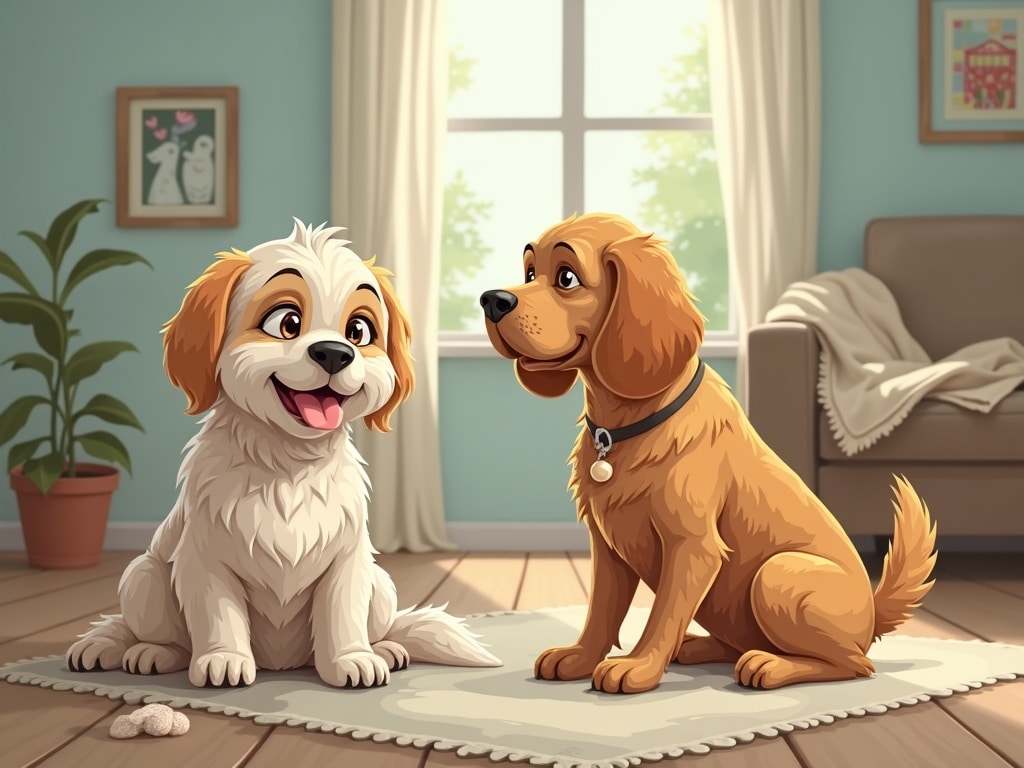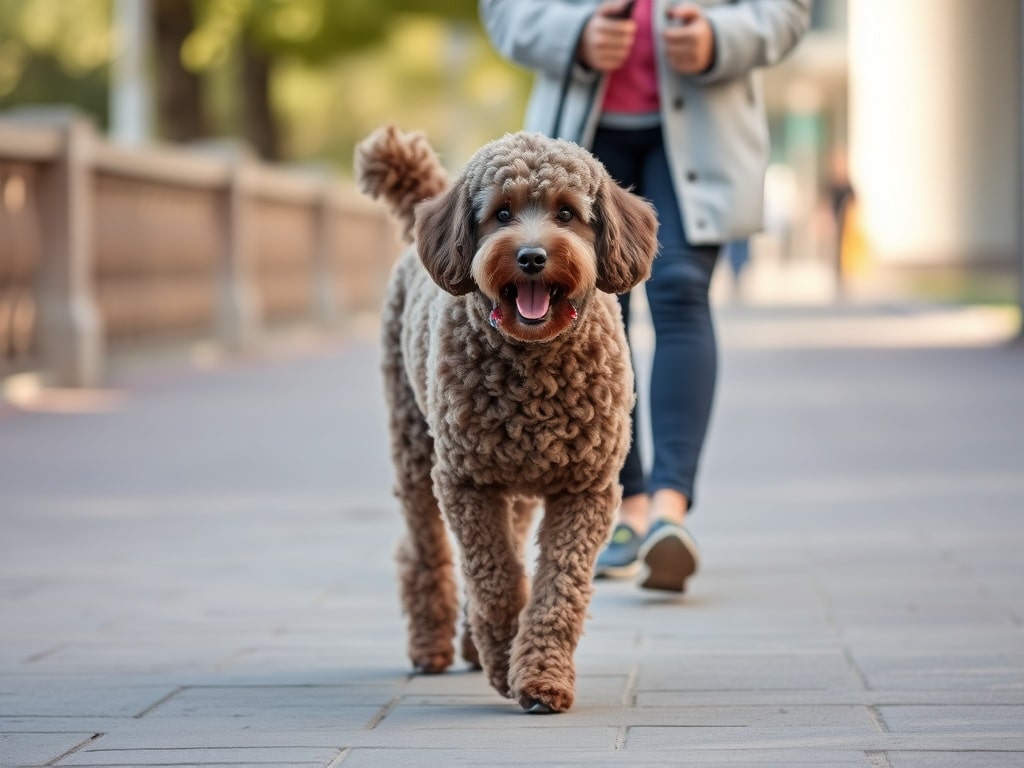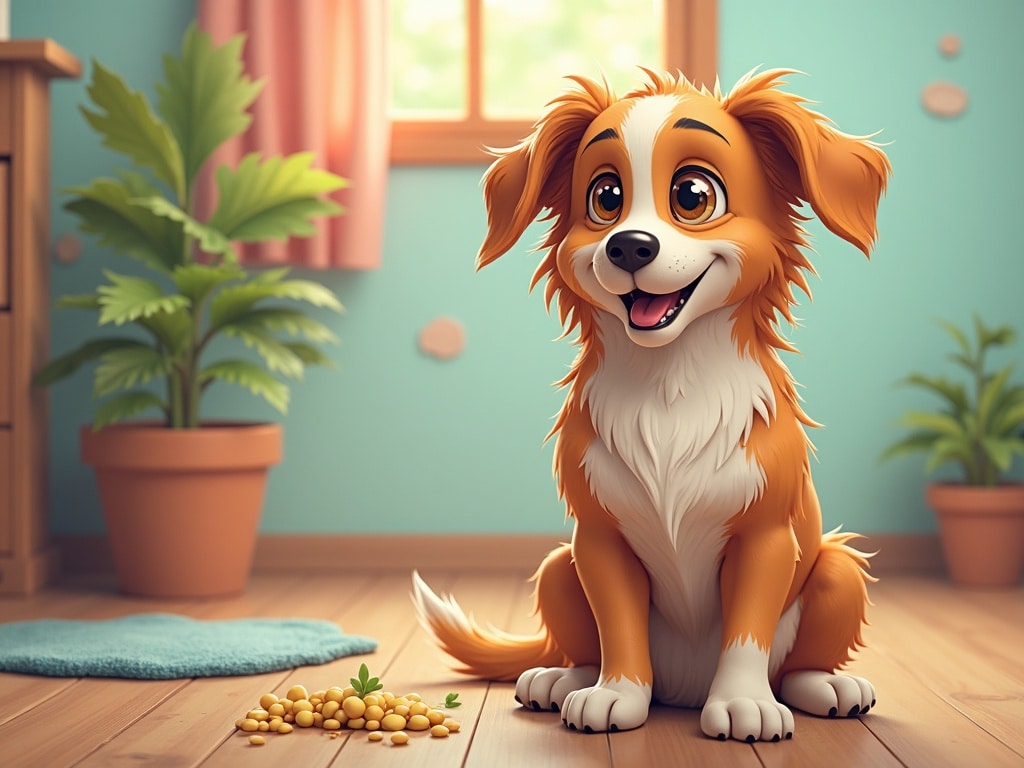Help! My Dog Keeps Peeing in the House: Stop Accidents Now!
Imagine this: You walk into your living room, ready to unwind after a long day, and are greeted by that unmistakable smell. Again. Your dog, reliably house-trained for years, has suddenly decided the Persian rug is the new fire hydrant. The frustration is real. The questions swirl: Why is this happening? What did I do wrong? How can I make it stop?
It’s a scenario many dog owners face. A house-trained dog suddenly peeing inside isn’t just an inconvenience; it can signal underlying medical or behavioral issues demanding your attention. Don’t despair! This comprehensive guide empowers you to understand the potential causes and take effective action to restore harmony and a dry household.
1. Why is My House-Trained Dog Suddenly Peeing Inside?
A sudden change in urination habits is a doggie distress signal. Before you jump to conclusions about spite or regression, consider the full spectrum of possibilities. The causes of a dog suddenly peeing inside fall into two broad categories: medical and behavioral. Pinpointing the correct category is crucial for effective resolution.
What are the common medical causes of sudden house soiling in dogs?
Several medical conditions can trigger increased urination or loss of bladder control. These include:
- Urinary Tract Infections (UTIs): Inflammation caused by bacteria leads to frequent urges and difficulty holding urine.
- Diabetes: High blood sugar levels result in excessive thirst and, consequently, increased urination.
- Kidney Disease: Impaired kidney function affects the ability to concentrate urine, leading to greater volume.
- Cushing’s Disease: An overproduction of cortisol can increase thirst and urination.
- Bladder Stones: These can irritate the bladder lining, causing frequent and sometimes painful urination.

What behavioral changes can lead to accidents inside?
Sometimes, the issue isn’t physical, but emotional or environmental. Common behavioral triggers include:
- Separation Anxiety: Stress from being left alone can manifest as inappropriate urination.
- Changes in the Household: New pets, babies, moving to a new home, or even changes in furniture arrangement can induce stress and anxiety.
- Submissive Urination: Excitement or fear can cause a dog to urinate involuntarily.
- Territorial Marking: Dogs may mark their territory, especially in the presence of new animals or people.
- Incomplete Potty Training: Even seemingly house-trained dogs may have gaps in their training. Make sure you’re not making these Potty Training SOS: Is Your Puppy’s Schedule a Recipe for Disaster?
How can I differentiate between a medical and behavioral issue?
Observation is key! Look for these clues:
- Medical: Increased thirst, straining to urinate, blood in the urine, licking at the urinary opening, lethargy, loss of appetite.
- Behavioral: Urinating when you leave the house, urinating when greeted, urinating in specific locations (marking), other signs of anxiety (panting, pacing, destructive behavior).
However, don’t attempt to self-diagnose. Any sudden change warrants a vet visit to rule out medical causes first.
2. Medical Reasons for a Dog Peeing Indoors: Diagnosis and Treatment
If a medical issue is suspected, your veterinarian will perform a thorough examination and run diagnostic tests to pinpoint the cause. Early diagnosis and treatment are essential to prevent complications and restore your dog’s well-being (and your peace of mind!).
What types of urinary tract infections (UTIs) can cause increased urination?
UTIs are typically caused by bacteria ascending the urethra into the bladder. Symptoms include frequent urination, straining, discomfort, and blood in the urine. A urine culture will identify the specific bacteria, allowing your vet to prescribe the appropriate antibiotics. Antibiotics generally provide relief within a few days, but the full course must be completed to eliminate the infection.
How does diabetes affect a dog’s urination habits?
Diabetes mellitus disrupts the body’s ability to regulate blood sugar. The excess sugar spills into the urine, drawing water with it and causing increased thirst (polydipsia) and urination (polyuria). Diabetes is diagnosed through blood and urine tests. Treatment involves insulin injections, dietary management, and regular monitoring of blood glucose levels.
What kidney problems can lead to accidents?
Kidney disease can impair the kidneys’ ability to filter waste and concentrate urine. This leads to increased urine volume and frequency. Diagnosis involves blood tests (to assess kidney function) and urine tests. Treatment may include a special diet, medications to manage blood pressure and phosphorus levels, and subcutaneous fluid therapy to support hydration. Kidney disease is often a progressive condition requiring ongoing management.
What other medical conditions (e.g., Cushing’s disease, bladder stones) might be responsible?
Cushing’s disease (hyperadrenocorticism) causes the adrenal glands to overproduce cortisol. This leads to increased appetite, thirst, urination, and a pot-bellied appearance. Diagnosis involves specific blood tests (ACTH stimulation test or low-dose dexamethasone suppression test). Treatment options include medications to suppress cortisol production. Bladder stones can irritate the bladder and cause inflammation. They are diagnosed with X-rays or ultrasound. Treatment may involve a special diet to dissolve the stones, medications to manage pain and inflammation, or surgical removal in severe cases.
What diagnostic tests should I request from my veterinarian?
Be prepared to discuss your dog’s symptoms, diet, and any recent changes in behavior or environment with your vet. Essential tests include:
- Urinalysis: To detect infection, blood, glucose, protein, and other abnormalities.
- Urine Culture: To identify the specific bacteria causing a UTI.
- Blood Tests: A complete blood count (CBC) and chemistry panel assess overall health and organ function.
- Blood Glucose Test: To rule out or diagnose diabetes.
- Kidney Function Tests: To assess kidney health (BUN, creatinine).
- Imaging (X-rays or Ultrasound): To visualize the bladder, kidneys, and other abdominal organs.
- Specific Endocrine Tests: If Cushing’s disease or other hormonal imbalances are suspected.
What are the typical treatment options for these medical conditions?
Treatment depends on the underlying cause and may include:
- Antibiotics: For UTIs.
- Insulin: For diabetes.
- Special Diet: For kidney disease or bladder stones.
- Medications: To manage Cushing’s disease, bladder stones, or other conditions.
- Surgery: To remove bladder stones or address other structural problems.
3. Behavioral Reasons for Inappropriate Urination: Causes and Solutions
Once medical causes have been ruled out (or addressed), it’s time to consider behavioral factors. Understanding the underlying motivation behind the behavior is key to developing effective solutions. Remember, punishment is never the answer and can worsen anxiety and fear, exacerbating the problem.
How does separation anxiety contribute to house soiling?
Dogs with separation anxiety experience intense distress when left alone. This can manifest in various ways, including inappropriate urination (and defecation), destructive behavior (chewing, scratching), excessive barking or howling, pacing, panting, and attempts to escape. The urination is not intentional; it’s a physiological response to extreme stress. Treatment involves reducing anxiety through counterconditioning (associating being alone with positive experiences), desensitization (gradually increasing the time the dog is left alone), and, in some cases, medication prescribed by a veterinarian.
Can changes in the household (new pet, baby, moving) cause stress-related accidents?
Dogs thrive on routine and predictability. Any significant change in their environment can trigger stress and anxiety, leading to accidents. New pets, babies, moving to a new home, changes in work schedules, or even rearranging furniture can disrupt their sense of security. To minimize stress, gradually introduce changes, provide a safe and comfortable space, maintain a consistent routine as much as possible, and offer plenty of positive reinforcement and attention.
Is submissive urination a possible cause? How to identify and address it?
Submissive urination occurs when a dog urinates involuntarily, usually when greeted, scolded, or approached in a threatening manner. It’s a sign of deference and an attempt to appease the perceived threat. The dog may also display other submissive behaviors, such as crouching, tucking its tail, licking its lips, and avoiding eye contact. Avoid direct eye contact, towering over the dog, or using a harsh tone. Approach the dog calmly and gently. Teach the dog basic obedience commands to build confidence. Consult with a professional trainer or veterinary behaviorist for guidance.
What role does marking territory play? How to deter marking behavior?
Territorial marking is a natural canine behavior, especially in intact males (though females and neutered males can also mark). Dogs mark by depositing small amounts of urine to leave their scent and signal their presence to other dogs. Marking is often triggered by the presence of other dogs (real or perceived), new objects, or changes in the environment. Neutering can significantly reduce marking behavior. Clean marked areas thoroughly with an enzymatic cleaner to eliminate the odor. Limit access to windows and doors where the dog can see other animals. Supervise the dog closely indoors and interrupt marking behavior with a firm no or a distraction. Redirect the dog to an appropriate elimination spot outdoors.
How can I rule out or address incomplete potty training?
Even dogs that seem fully house-trained may have occasional accidents due to gaps in their training. Review the basics of potty training: take the dog outside frequently (every 2-3 hours), especially after waking up, eating, and playing. Reward successful elimination with praise and treats. Supervise the dog closely indoors and prevent access to areas where accidents are likely to occur. Consider crate training to provide a den-like space and encourage bladder control. If accidents continue, go back to basics and retrain the dog as if it were a puppy.
What are some effective environmental management strategies?

Environmental management can play a crucial role in preventing accidents, especially when combined with training and behavior modification. These strategies include:
- Restricting Access: Use baby gates or closed doors to limit the dog’s access to certain areas of the house.
- Crate Training: Provides a safe and secure space and encourages bladder control.
- Diapering: Dog diapers can be helpful for managing incontinence or marking behavior.
- Frequent Potty Breaks: Increase the frequency of outdoor potty breaks, especially during times of anxiety or stress.
4. Effective Potty Training Strategies for Adult Dogs
Retraining an adult dog requires patience, consistency, and positive reinforcement. Whether you’re dealing with incomplete training or a behavioral regression, these strategies can help you re-establish good habits.
How to establish a consistent potty schedule.
A regular schedule is the foundation of successful potty training. Take your dog outside first thing in the morning, after meals, after naps, after playtime, and before bedtime. Choose a designated potty spot and use a consistent command (e.g., Go potty). If the dog eliminates within a few minutes, praise enthusiastically and offer a treat. If not, bring the dog back inside and try again in 20-30 minutes. Avoid distractions during potty breaks (no playing or socializing) to allow the dog to focus on the task at hand.
What positive reinforcement techniques are most effective?
Positive reinforcement focuses on rewarding desired behaviors, such as eliminating outdoors. Use praise, treats, or toys to reward successful potty breaks. Avoid punishment, which can create fear and anxiety and worsen the problem. Clicker training can be a helpful tool for marking the exact moment of desired behavior. Be consistent with your rewards and use a high-value treat that the dog finds irresistible.
How to properly clean up accidents to eliminate odors.
Thorough cleaning is essential to eliminate odors that can attract the dog back to the same spot. Use an enzymatic cleaner specifically designed for pet messes. These cleaners break down the urine molecules, eliminating the odor completely. Avoid using ammonia-based cleaners, as they can smell similar to urine and encourage the dog to re-mark the area. Blot up as much urine as possible with paper towels, then saturate the area with the enzymatic cleaner. Follow the manufacturer’s instructions for application and drying time.
What training tools (e.g., crate, potty bells) can be helpful?
Several training tools can aid in potty training:
- Crate: Provides a den-like space and encourages bladder control. Never use the crate as punishment.
- Potty Bells: Hang bells on the door used for potty breaks and teach the dog to ring them when it needs to go outside.
- Leash: Keeps the dog focused during potty breaks and prevents wandering.
- Enzymatic Cleaner: Eliminates odors and discourages re-marking.
How to manage nighttime accidents.
Nighttime accidents can be frustrating, but there are several strategies to minimize them. Limit water intake a few hours before bedtime. Take the dog out for a potty break right before bedtime. If the dog is crate trained, make sure the crate is appropriately sized and comfortable. If accidents persist, consult with your veterinarian to rule out medical causes or consider using dog diapers.

5. Dealing with Age-Related Incontinence in Senior Dogs
As dogs age, they may develop incontinence due to weakened bladder muscles, hormonal changes, or cognitive decline. While frustrating, it’s important to approach the situation with compassion and patience. There are several ways to manage age-related incontinence and maintain your senior dog’s comfort and quality of life.
What causes incontinence in older dogs?
Common causes of incontinence in senior dogs include:
- Weakened Bladder Muscles: The muscles that control the bladder can weaken with age, leading to decreased bladder control.
- Hormonal Imbalances: Estrogen deficiency in spayed females can contribute to incontinence.
- Cognitive Dysfunction (Dog Dementia): Cognitive decline can affect a dog’s awareness of its need to eliminate.
- Prostate Problems: Enlarged prostate in male dogs can put pressure on the bladder, leading to incontinence.
- Arthritis: Painful joints can make it difficult for a dog to get up and go outside in time.
What medications can alleviate age-related incontinence?
Several medications can help manage incontinence in senior dogs:
- Phenylpropanolamine (PPA): Strengthens the muscles that control the bladder.
- Diethylstilbestrol (DES): An estrogen supplement that can help improve bladder control in spayed females.
- Incurin: Another medication used to treat hormone-responsive incontinence.
Always consult with your veterinarian before giving your dog any medication.
How to manage hygiene and prevent skin irritation.
Incontinence can lead to skin irritation and infections. Keep your dog clean and dry by bathing him regularly with a gentle, hypoallergenic shampoo. Use dog diapers or absorbent pads to protect furniture and bedding. Apply a barrier cream to the skin around the urinary opening to prevent irritation. Check the skin regularly for signs of redness, inflammation, or infection.
What lifestyle adjustments can make my senior dog more comfortable?
Several lifestyle adjustments can improve your senior dog’s comfort:
- Frequent Potty Breaks: Increase the frequency of outdoor potty breaks, especially if the dog has difficulty holding urine.
- Easy Access to Potty Area: Make sure the potty area is easily accessible, especially if the dog has mobility issues.
- Comfortable Bedding: Provide soft and comfortable bedding that is easy to clean.
- Elevated Food and Water Bowls: Can help reduce strain on joints.
- Ramps or Steps: To help the dog access furniture or vehicles.
When is it time to consider palliative care or euthanasia?
As incontinence progresses, it may become difficult to manage and significantly impact your dog’s quality of life. If your dog is experiencing chronic pain, loss of appetite, or a decline in cognitive function, it may be time to consider palliative care or euthanasia. Discuss these options with your veterinarian to make the most compassionate decision for your beloved companion.
6. When to Seek Professional Help: Dog Trainer or Veterinary Behaviorist?
Knowing when to seek professional help can be crucial in resolving house soiling issues. While many cases can be managed with home remedies and training, some require the expertise of a veterinarian, dog trainer, or veterinary behaviorist.
When is veterinary intervention essential?
Veterinary intervention is essential in the following situations:
- Sudden Onset of Accidents: Especially if accompanied by other symptoms, such as increased thirst, straining to urinate, or blood in the urine.
- Suspected Medical Condition: If you suspect a medical cause, such as a UTI, diabetes, or kidney disease.
- Incontinence: Especially in senior dogs, to rule out medical causes and explore treatment options.
- Medication: If medication is needed to manage incontinence or anxiety.
When should I consult a professional dog trainer?
A professional dog trainer can be helpful in the following situations:
- Incomplete Potty Training: To address gaps in training and establish good habits.
- Marking Behavior: To deter marking and redirect the dog to appropriate elimination spots.
- Anxiety-Related Accidents: To teach coping mechanisms and reduce anxiety.
- Basic Obedience Training: To build confidence and improve communication.
What are the benefits of working with a veterinary behaviorist?
A veterinary behaviorist is a veterinarian who specializes in animal behavior. They have advanced training in diagnosing and treating behavioral problems, including anxiety, aggression, and house soiling. A veterinary behaviorist can provide a comprehensive assessment of the dog’s behavior, develop a customized treatment plan, and prescribe medication if needed. Veterinary behaviorists are particularly helpful in cases of severe anxiety, aggression, or when other training methods have failed.
How to find a qualified professional.
When seeking professional help, it’s important to find a qualified and experienced individual. Here are some tips:
- Veterinarian: Ask your veterinarian for recommendations.
- Dog Trainer: Look for a trainer who is certified by a reputable organization, such as the Certification Council for Professional Dog Trainers (CCPDT).
- Veterinary Behaviorist: Look for a veterinarian who is board-certified by the American College of Veterinary Behaviorists (ACVB).
- Check References: Ask for references from previous clients.
- Observe a Class or Session: If possible, observe a class or session before hiring a trainer.
House soiling can be a frustrating problem, but with a proactive approach, understanding, and consistency, you can identify the cause, implement effective solutions, and restore a happy, healthy, and accident-free environment for both you and your furry friend.

